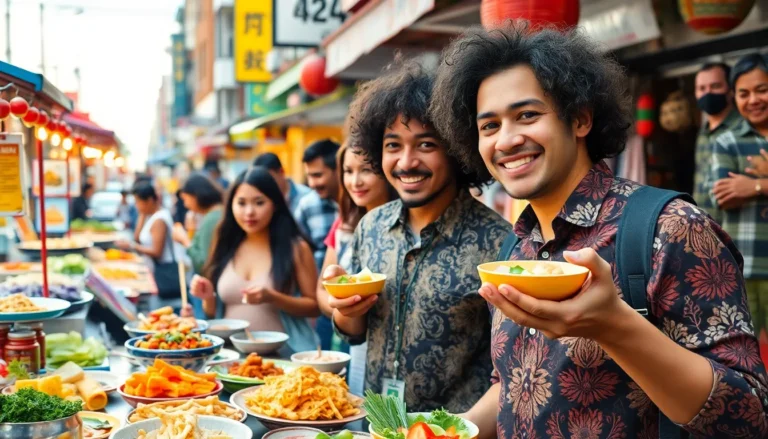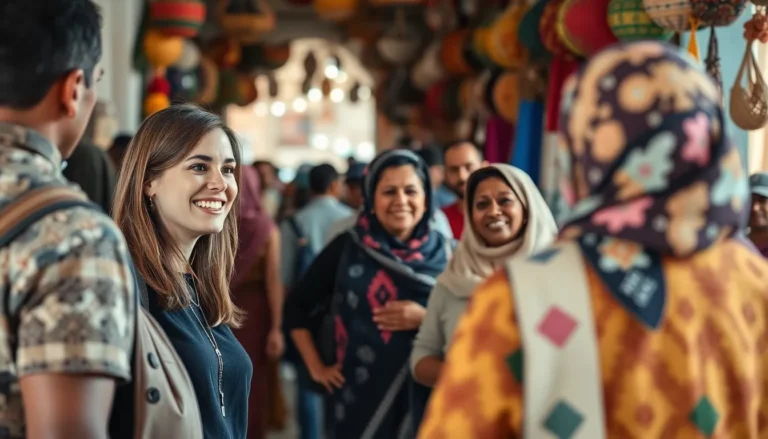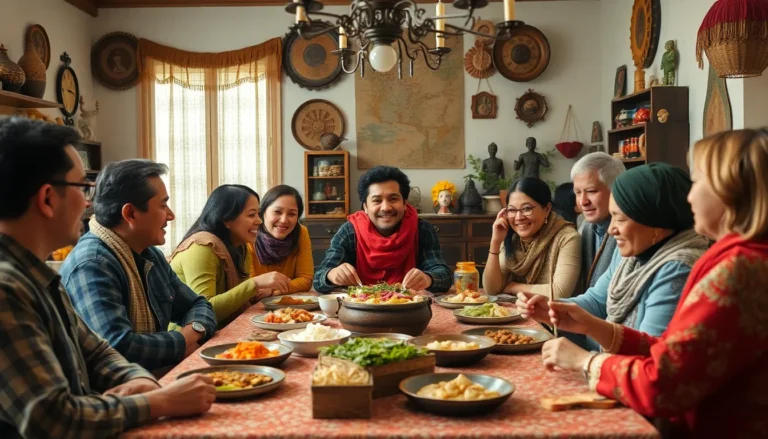Table of Contents
ToggleCulture shapes every aspect of life, influencing how people think, behave, and connect with one another. From the food they eat to the music they groove to, culture is the invisible hand guiding choices and preferences. Ever wondered why some folks can’t get enough of spicy food while others shy away? Spoiler alert: it’s all in the culture!
Understanding cultural influences isn’t just for anthropologists or world travelers. It’s essential for anyone looking to navigate the complex web of human interactions. Whether in business or personal relationships, recognizing these influences can lead to stronger connections and better communication. So buckle up as we dive into the colorful world of culture and discover how it shapes our lives in ways we often overlook.
Understanding Culture Influences
Culture shapes behaviors, thoughts, and connections in significant ways. Grasping cultural influences enriches personal and professional interactions.
Definition of Culture
Culture encompasses shared values, beliefs, and practices of a group. It reflects customs, traditions, language, and art. This collective identity forms the framework for how individuals experience life. Understanding culture aids in recognizing diverse perspectives. Knowledge of cultural specifics enhances communication skills. Diverse customs illustrate how various groups navigate challenges. Shared history often influences cultural expressions.
Types of Cultural Influences
Cultural influences manifest in several types. Social influences include family, friends, and community norms. These social structures shape individuals’ behavior patterns. Educational institutions contribute through curriculum and teaching methodologies. Media, including television and social networks, can reflect and shape values. Religious practices significantly impact moral values and lifestyles. Economic factors influence access to resources and opportunities. Geographic location often defines cultural experiences as regional differences emerge.
Historical Context of Culture Influences

Cultural influences have transformed throughout history, shaping societies and individual behaviors. Major events and interactions often drive this evolution.
Evolution of Cultural Practices
Cultures evolve through a blend of traditions and innovations. Rituals passed down through generations adapt, reflecting societal changes. Language development marks significant cultural shifts, impacting communication and thought processes. Artistic expressions, including music and visual arts, reveal cultural narratives and values. Transformations in daily life practices, such as cuisine, showcase the influence of migration and trade. Practices once exclusive to specific groups now intertwine due to interconnectedness.
Impact of Globalization
Globalization intensifies cultural exchanges on multiple levels. Increased accessibility to information broadens awareness of diverse customs. Media plays a pivotal role in disseminating cultural trends across borders. Economic interdependencies encourage shared experiences, merging various cultural elements. Traditional practices often blend with global influences, leading to innovative expressions. Enhanced travel opportunities facilitate firsthand engagement with different cultures. This interplay fosters a deeper appreciation for cultural diversity while also prompting debates on cultural preservation and appropriation.
Culture Influences in Different Sectors
Cultural influences shape various sectors, significantly impacting how individuals interact within their environments.
Education
Cultures affect educational systems and learning methodologies around the globe. Traditional teaching styles reflect cultural values, shaping the roles of teachers and students. In some cultures, collaborative learning is emphasized, promoting teamwork and discussion among students. In contrast, other cultures may prioritize individual achievement and formal assessment. Diverse language backgrounds also illustrate cultural diversity in education, impacting curriculum choices and teaching techniques. Adding multicultural perspectives in educational materials fosters inclusivity, allowing students to connect with varied experiences and knowledge. Such practices help in producing well-rounded individuals who appreciate global diversity.
Business
Cultural influences play a crucial role in shaping business practices and corporate strategies. Different cultures approach negotiation and communication distinctively, affecting partnership dynamics. In certain cultures, building relationships precedes business transactions, emphasizing trust and personal connections. Business leaders recognize that adapting to cultural norms enhances effectiveness in global markets. Branding and marketing strategies resonate better when aligned with local cultural values. Consumer preferences, influenced by cultural norms and beliefs, shape product offerings. This adaptability leads to stronger customer loyalty and market presence, highlighting the importance of understanding cultural nuances in business operations.
The Role of Media in Culture Influences
Media plays a significant role in shaping cultural perspectives and influencing societal norms. It serves as a primary avenue for disseminating information and showcasing diverse viewpoints.
Social Media Impact
Social media platforms profoundly affect cultural dynamics. They create spaces where individuals share opinions and trends, shaping public perception. Viral content can swiftly influence behavior, fashion choices, and social movements. Engagement on platforms like Instagram and TikTok accelerates cultural exchange among users worldwide. Interaction patterns on these platforms reinforce group identities and foster community connections. The immediacy of social media enables users to challenge existing narratives and advocate for change.
Traditional Media Perspectives
Traditional media maintains a crucial role in cultural influence despite the rise of digital platforms. Television, print, and radio deliver narratives that reflect and shape societal values. News outlets and documentaries provide critical insights into pressing issues, impacting public discourse. Advertising in traditional media also promotes cultural standards, affecting behaviors and purchasing decisions. Through film and music, artistic expressions in traditional media highlight cultural stories and resonate with audiences. Collectively, these forms of media establish common ground and contribute to shared cultural experiences.
Cultural influences are woven into the fabric of everyday life shaping identities and interactions. By recognizing the diverse elements that contribute to these influences individuals can foster deeper connections and enhance communication. Embracing cultural diversity enriches personal experiences and broadens perspectives in both social and professional settings.
As globalization continues to blur cultural boundaries understanding these dynamics becomes essential. It not only promotes inclusivity but also encourages a more harmonious coexistence. By valuing cultural differences individuals and organizations can navigate the complexities of a multicultural world with confidence and empathy.







